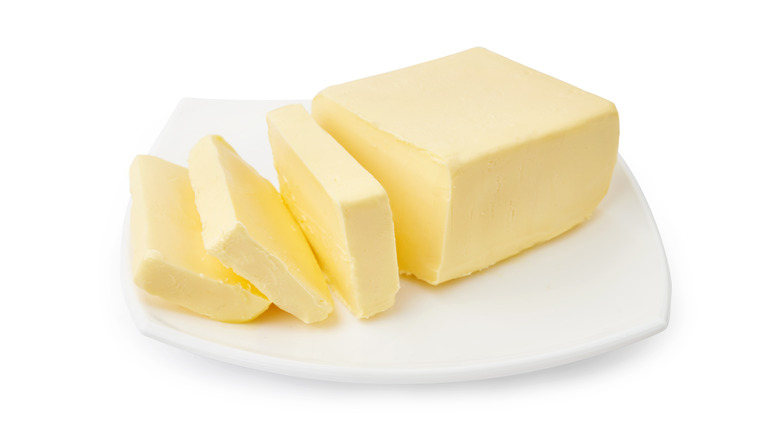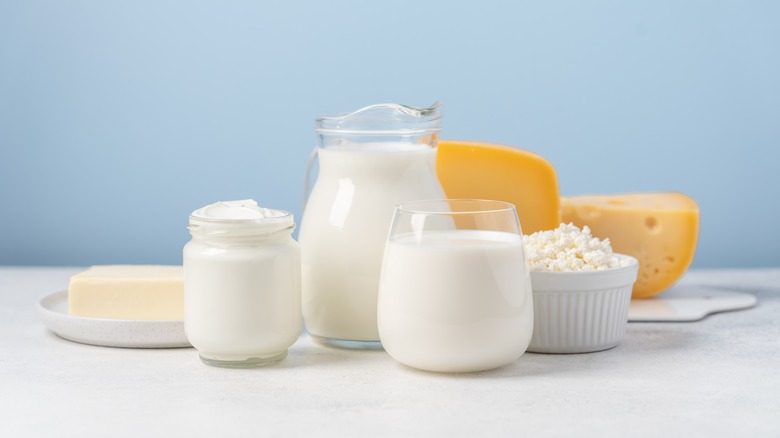The Reason This Type Of Saturated Fat Found In Butter Isn't So Unhealthy
The scapegoat of the diet world for decades, butter and health usually aren't used in the same sentence. Decadence, richness, and the term "bad fat" are probably more in line with what comes to mind. We can probably thank the low-fat craze of the 1990s for that, according to Marion Nestle. Fats, especially of the saturated variety such as butter, have been in the proverbial doghouse for quite some time now. However, tides may be changing. Thanks to emerging studies and new data, they seem to be having somewhat of a newfound appreciation. Turns out, all that indulgence is what your body may need.
Healthline explains your body breaks down fats into fatty acids to be used for energy, growth, and several other important functions. Fatty acids are classified as either essential or non-essential. Essential means your body cannot make them and you must get them from food (and it's important to). There are two essential fatty acids that most people are familiar with — Omega-3s and Omega-6s (via Euresis Journal). The benefits of both are well-known, taking up valuable real estate in any supplement aisle.
We know to eat our salmon for an added EFA-boost, but it turns out we may be able to add our baddie butter to that list.
Not-so-bad fat
In 2020, a published study found that the saturated fatty acid in butter, C15:0 (also called Pentadecanoic Acid), is the first essential fatty acid since Omega-3 was discovered some 90 years ago. Thirty-some studies and years later, higher levels of C15:0 have been linked to a myriad of health benefits including reduced risk of Type 2 diabetes, heart disease, and non-alcoholic fatty liver disease, as well as a longer lifespan. One study found C15:0 to be better at reducing inflammation than the ubiquitous Omega-3, with the study's lead author, Dr. Stephanie Venn-Watson, dubbing it "the essential, essential fatty acid" (via PR Newswire).
Thanks to a peer-review study conducted in 2022, we may also be able to add managing depression and autoimmune diseases to that list, as well as a need to reevaluate current nutrition guidelines on saturated fats (via Plos One). In addition to butter, C15:0 can be found in other dairy foods such as milk and cheese, some meat and fish, as well as some oils such as coconut and palm kernel (via Nursa.org). Not so bad, is it?

